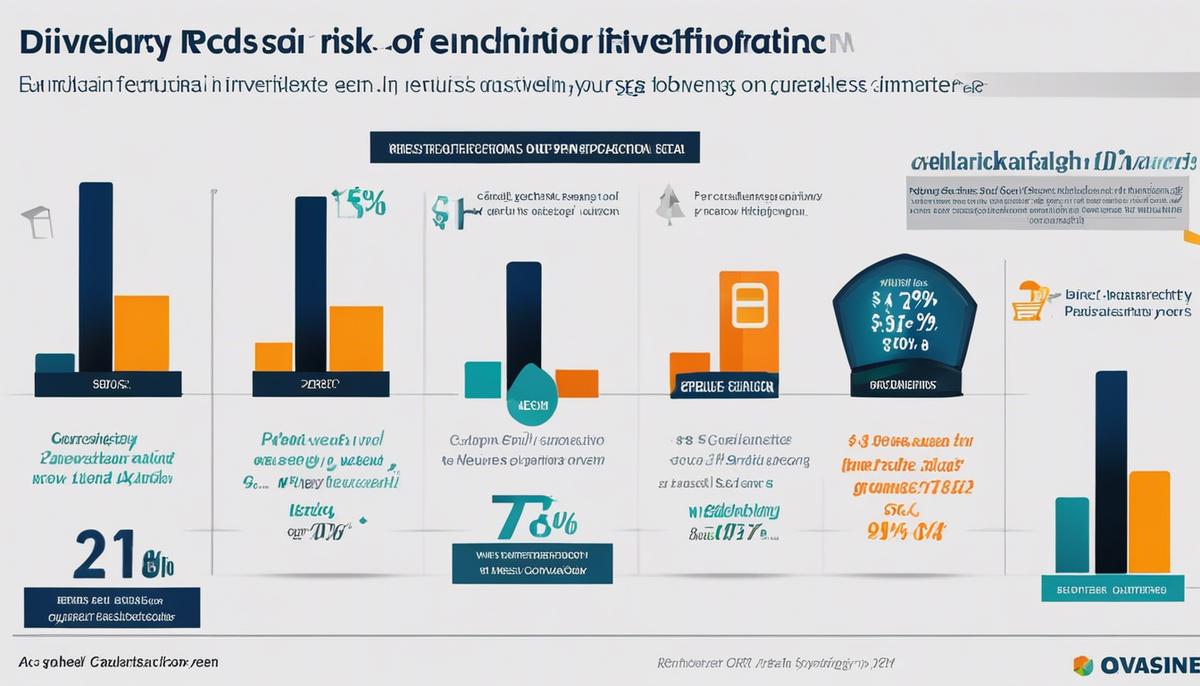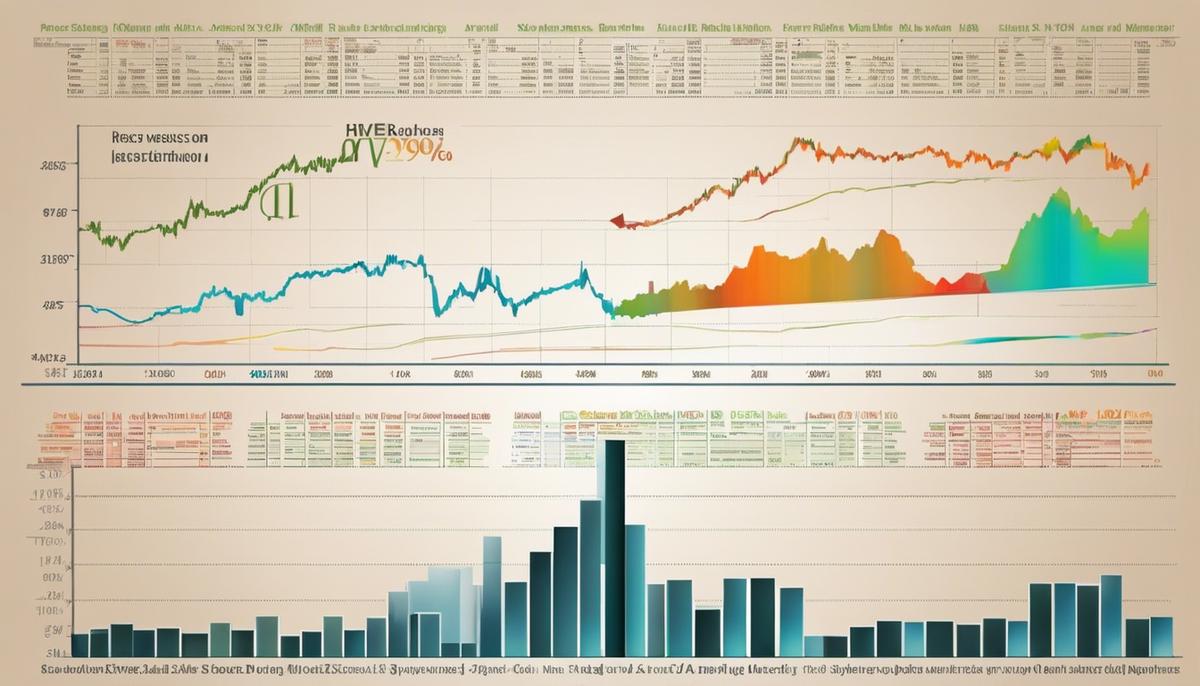Understanding the importance of diversification in the stock market is key to successful investing. This crucial investment strategy enables an investor to manage risk, balance their portfolio, and reap potential benefits from multiple industries. Nevertheless, diversification is not simply about having a mix of various investment products; it’s about understanding how each investment works and finding a perfect mix that aligns with your financial objectives. In this light, we will explore the concept of diversification, its benefits, methods of achieving it, practical case studies, and potential pitfalls associated with it. Unraveling these intricate details presents invaluable guidance for an investor in making informed, strategic, and risk-adjusted investment decisions.
Understanding Diversification in the Stock Market
Unraveling Diversification: A Key Strategy for Stock Market Investor Success!
Diversification, often deemed as the only free lunch in finance, is a powerful stock market tool that shouldn’t be overlooked by savvy investors. Imagine an orchestra, each instrument playing a key role. Similarly, diversification operates on the premise of not putting all your eggs in one basket—or investing solely in one company, sector, or type of stock.
But why is diversification considered an essential strategy? Let’s drive right into the peculiarity of this financial maneuver.
Risks lurk in the volatile landscape of the stock market. Drops in stocks prices are often abrupt, ruthless, and quite frankly, inevitable. Betting heavily on one stock or sector certainly boasts potential for high rewards, but it equally, if not more, opens doors to substantial risks. Recognize that extraordinary rewards usually accompany extraordinary risks. And it’s here, in managing these risks, that diversification wears the crown!
Diversification is like a well-devised insurance policy against bankruptcy, volatility, and potential market downturns. By splitting investments among diverse stocks, bonds, and commodities, investors craft a well-rounded portfolio capable of weathering market fluctuations. Its success does not depend on an individual stock’s performance, but on the overall portfolio. The magic of diversification unfolds as it potentially decreases losses without significantly impacting potential earnings.
A key aspect of diversification is correlation. Not all sectors or asset types operate on similar principles or react the same way to market changes. This variability makes it possible to find assets inversely correlated, or independent from each other, helping balance and insulate your portfolio from market turbulence. Looking beyond domestic borders and considering global market opportunities may bring additional diversification benefits to the table. A truly successful investor capitalizes on this principle to build a rock-solid, enduring portfolio, capable of mitigating market risks.
While it sounds like an investment elixir, remember, diversification isn’t about chasing every single investment opportunity. It’s a strategic approach involving thoughtful analysis and deliberate distribution of investments, supporting long-term financial stability and growth. This combination creates a robust shield, protecting investors from sudden downturns and helping achieve the most sought-after goal in investing: Consistent. Long-term. Returns.
In conclusion, if the stock market is a battlefield, diversification is your ultimate shield. An effective diversification strategy could be your game-changer, offering an effective risk management tool while enabling steady capital growth. As the unparalleled genius Albert Einstein once stated, “Compound interest is the eighth wonder of the world.” And diversification, faithful ally of compound interest, undeniably deserves to stand as the ninth!
Investors, it’s time to don your financial shield and conquer the market peaks with the power of diversification! With solid due diligence, strategic patience, and a diversified approach, your investment portfolio will certainly take on the symphony of market success!

Potential Benefits of Diversification
Unlocking the Potentials of Diversified Stock Investments
Advancing into the arena of stock investing necessitates a pervasive comprehension of market dynamics, and a vital aspect of this is diversification. The art of diversified investing is crucial in stimulating long-term financial security and recession-proofing aspects of your stock portfolio. Besides emphasizing the protective benefits of diversification, let’s delve into some underappreciated upsides that could strengthen your investment strategy.
An engrossing facet of diversified investing is exposure to top performing sectors. Just as the economy shifts through different stages of growth and contraction, so do industry sectors. Diversification, in essence, allows exposure across sectors such as technology, healthcare, or manufacturing, allowing investors to ride the wave of sectoral boom periods.
Moreover, diversified stock investment steps up the game by providing access to growth opportunities. Growth stocks, categorized by their vibrant earnings growth, offer enormous upside potentials and, when joined with value stocks that trade for less than their intrinsic values, create a dynamic stock portfolio.
Additionally, it’s worth pondering the tax advantages linked with diversified investing. A highly-diversified portfolio offers room for tax-efficient strategies. For instance, tax-loss harvesting, where the investor sells stocks at a loss to offset capital gains tax liability, becomes feasible with sufficient varieties of stocks in the portfolio.
Added to these, the flexibility provided by diversification is another major perk. It lets investors tweak their portfolios from time to time, accommodating fresh stocks while smoothly exiting positions that no longer serve their interests. This flexibility is crucial in maintaining an investment strategy that adheres to changing market environments and personal financial goals.
Finally, embracing diversification amplifies opportunities for asymmetrical returns. Spreading investments thinly across numerous stocks, sectors, or countries proliferate the chances of stumbling upon a real jackpot – a stock that renders exponential returns .
In conclusion, the realm of diversified investment in stocks stretches far beyond curbing volatility and hedging against risks. It facilitates a holistic investment approach that harnesses market opportunities, fosters tax efficiency, encourages adaptability and increases the probability of realizing substantial returns. As impressive as these benefits are, remember that balancing diversification requires astute strategy, patience, and a keen eye for spotting potential trends.

Methods of Achieving Diversification
The Genius of Index Funds in Diversification Strategy
An individual equity can often resemble a rollercoaster ride with its extreme ups and steep downs. When you have a diversified portfolio, the ride may be less extreme, and index funds are a key element in accomplishing such a feat. Primarily, index funds, which aim to mimic the performance of a certain index such as the S&P 500, serve as an affordable and simplistic way to diversify one’s portfolio across an extensive range of companies.
In Purchase of Up-and-Coming Industries
Sometimes, diversification doesn’t just mean spreading out your investments across the market, but also investing in industries that may not have matured yet. Be it technology, artificial intelligence, or renewable energy, there’s always an ‘industry of the future’ offering the prospects of extraordinary growth down the line. Of course, the risk level is comparably high as these sectors often venture into unprecedented areas. Nevertheless, potential gains can be significant, making these sectors a logical facet of any diversification strategy.
Embracing the Power of Dollar-Cost Averaging
Another effective strategy to ensure diversification in the stock market involves ‘Dollar-Cost Averaging’ (DCA). It involves investing a fixed amount at regular intervals regardless of the share price. This disciplined approach enables investors to buy more shares when prices are low and fewer when they’re high. Over time, this can mitigate the impact of market volatility and enhance the chances of achieving reliable, long-term returns, leading to a more diversified and resilient portfolio.
Exploring Bond and Other Asset Classes
Intelligent diversification doesn’t stop at the borders of the equities market. Bonds, real estate, or commodities, to name a few, can present lucrative opportunities to diversify beyond stocks. Treasurys, corporate bonds, or municipal bonds can offer a continuous income and act as a stabilizer during turbulent equity markets. Real estate, be it via direct investment, REITs, or real estate crowdfunding platforms, can serve as an excellent hedge against inflation, while commodities like gold have proven to be a lifeline in times of economic distress.
Actively Reviewing and Rebalancing
Diversification is not a one-time event but rather a continuous process of reviewing and rebalancing. Your portfolio may need to change as you age, or if your financial goals shift. It could also require readjusting based on the performance of the market. Actively monitoring your investments will also allow you to identify when a sector may be losing steam or another is ready to take off, hence giving you a shot at rebalancing for better returns.
In the end, diversification is no magic-but science. It calls for patience, discipline, continuous learning, and sometimes, just a gut instinct. And with every successful step towards diversification, we assure our financial future, one stock, bond, or asset at a time.

Case Studies of Successful Diversification
Utilizing a keen entrepreneurial lens, let’s delve into some real-world cases that demonstrate the potency of successful diversification strategy in the stock market. From Berkshire Hathaway’s eclectic portfolio to the superbly balanced investing approach of renowned firms, these cases underscore the worth of diversification.
Let’s begin with Berkshire Hathaway, the multinational conglomerate headed by Warren Buffett. Berkshire’s portfolio demonstrates a well-balanced diversification across various industries such as insurance, financial services, retail, manufacturing, utilities, and even railway transportation. This broad-based diversification strategy has contributed to its consistent profitability over many years, emphasizing the value of not putting all your eggs in one basket.
Another remarkable example is that of BlackRock, the world’s largest asset-manager. It maintains a diversified portfolio that becomes a draw for investors seeking lower volatility. Its iShares investment unit, which offers exchange-traded funds (ETFs), owes its roaring success to the diversified investment choices it provides, giving exposure to virtually every sector of the global economy, from technology to healthcare to green energy.
Conversely, situations can be sighted where lack of diversification proved detrimental. Take the case of Enron Corporation. Investors who had a poorly diversified portfolio relying heavily on Enron shares were unable to prevent significant investment losses when the company filed for bankruptcy. In this scenario, a diversified investment approach might have drastically reduced the impact of this catastrophic event.
Let’s also consider the robust diversification strategy by the Yale University Endowment Fund, masterminded by David Swensen. Take note, this strategy does not just revolve around equities but spans a vast array of asset classes: funds, bonds, real estate, foreign equities, and even natural resources. Swensen’s strategy proved so successful that it became a model for other endowment funds, validating the relevance of diversification across various asset classes apart from equities.
Lastly, the modern segregation of an investor’s portfolio into Exchange Traded Funds (ETFs) and Mutual Funds highlights the utilization of diversification as a strategic tool. Funds like the Vanguard S&P 500 ETF (VOO) and the diversified iShares Russell 3000 ETF expose investors to a broad swath of industries, providing an excellent cushion against uncertainties in any particular sector or stock.
Judging from these examples, it is evident that diversification, whether across industries or asset classes, is an effective risk management tool that can safeguard investments during market downturns and provide a road to consistent long-term returns. May the ins and outs of these real-world examples serve as sapient guides for any successful investor. Today’s market innovators and financial titans truly have more to offer beyond earnings – lessons from their leaps and bounds.

Potential Pitfalls of Diversification
While diversification in investing holds a significant role in mitigating risks and ensuring steady returns, investors may still confront some potential downsides or setbacks.
One of these is dilution of returns. Particularly in bull markets, when specific industries or sectors are surging industriously, a diversified portfolio may limit an investor’s exposure to these high-performing sectors, thereby potentially diluting overall portfolio returns. However, the notion of “all your eggs in one basket” is a risky strategy, and while the upside might seem enticing, an entire portfolio could be wiped out by a substantial downturn in that particular sector or company.
Over-diversification is another predicament that investors may grapple with. As investors strive to diversify, there’s a potential to cross the line into over-diversification which can lead to mediocrity and underperformance. This happens when a portfolio becomes so spread out that its returns simply mirror the market because it effectively is the market. Investors lose the potential benefits associated with picking winners and strategically taking informed risks.
Additionally, investors might confront a higher level of complexity and increased transaction costs as they aim for broad diversification. With the accumulation of numerous stocks, bonds, and other investment types, the portfolio becomes increasingly convoluted. This requires more active oversight and occasional rebalancing, factors that not only afford more energy and time but can lead to escalated transaction and forex costs, especially for global diversification beyond one’s home market.
Furthermore, issues related to timing and sequence of returns can also be important factors. A diversified portfolio doesn’t protect an investor from the detrimental effects of withdrawing funds during a time of poor market performance. This factor becomes more significant for retirees or those nearing retirement age who are taking regular distributions from their investment portfolio.
By and large, while diversification is a sturdy shield armed against the financial market’s inconstant battle, it isn’t infallible. It doesn’t entirely eliminate risk – it only spreads it across different investment categories. Therefore, a balanced approach, strategy-driven rather than merely widely scattering one’s investments, is the way to go to effectively maneuver through the multifaceted financial landscape.

While diversification offers immense opportunities for impressive returns and risk management in the stock market, it also presents its fair share of challenges. Therefore, properly understanding these potential pitfalls and how to circumvent them becomes integral to an investor’s success. Remember, in the stock market, one-size-fits-all strategies do not exist. Every investor must carve out a unique diversification strategy that superintends their appetite for risk and aligns with their specific financial goals. This way, diversification becomes not just a strategy but a personalized tool for optimized yields and sustained wealth creation in the exciting world of stock market investing.
